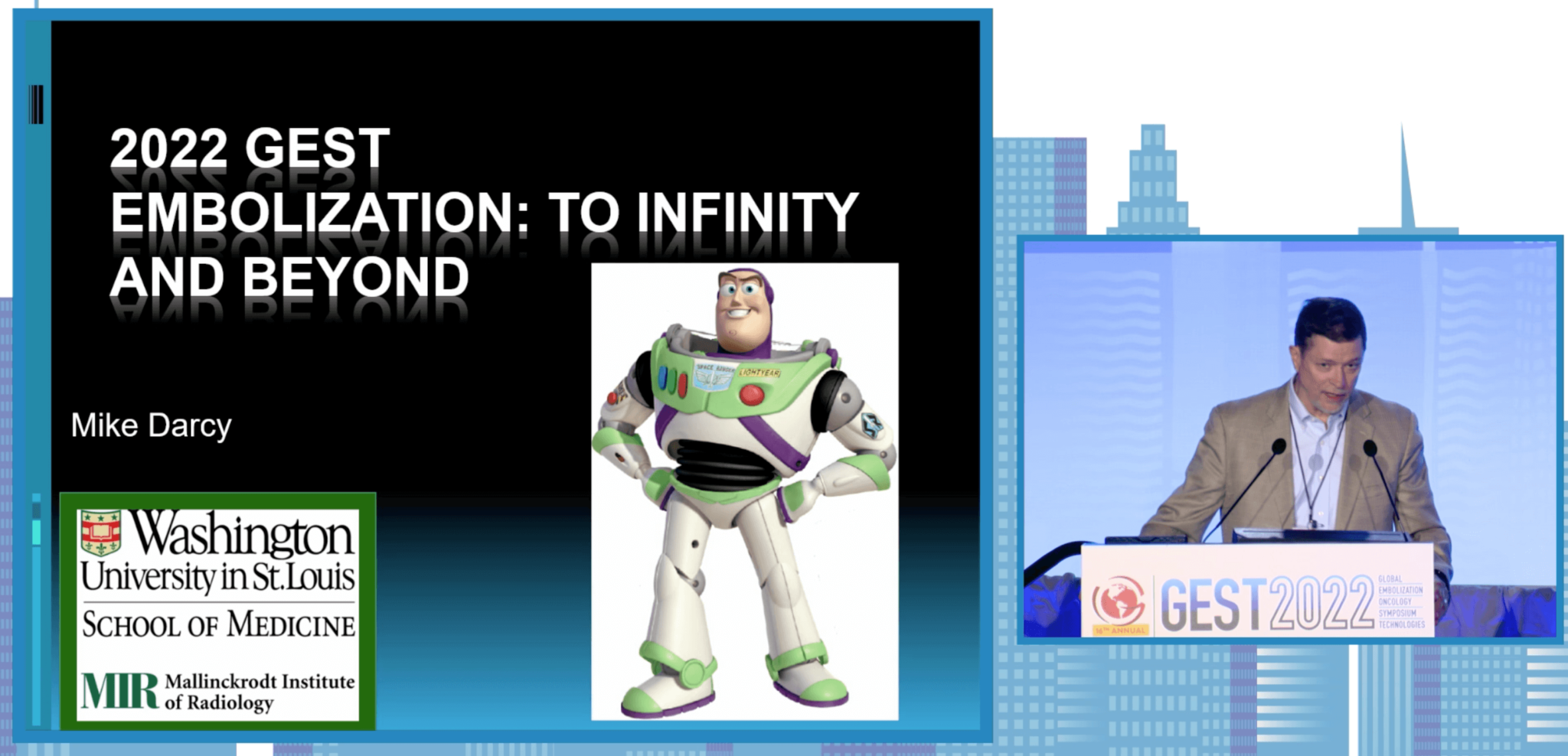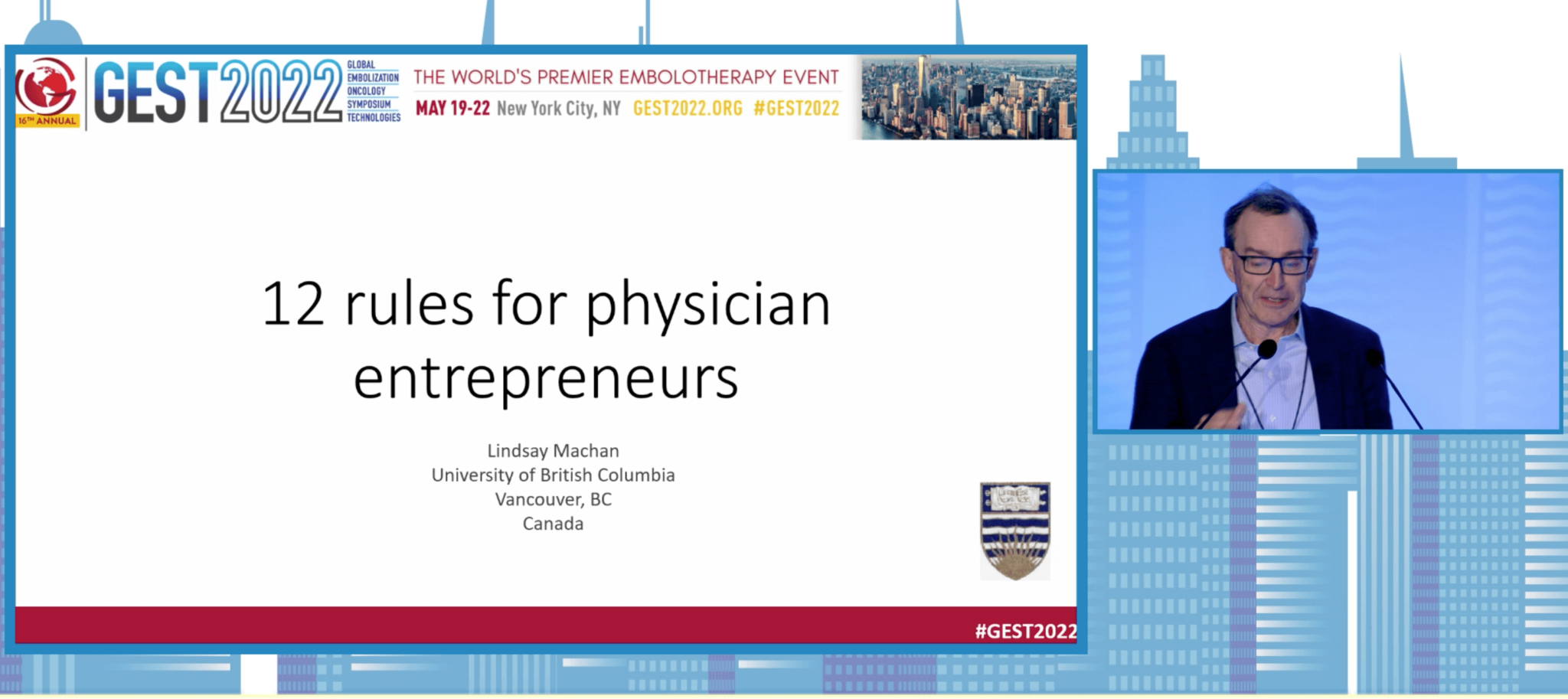Where we’ve been, where we’re going, and how the evolution has transformed IR. A summary from honorary GEST 2022 guest lecturer, Mike Darcy, Washington University School of Medicine.
The first documented embolization procedure appeared in JAMA in 1904. Since then, the technical aspects have evolved, new applications have been developed and IRs themselves have evolved. The challenges in the early days of embolization were found in large delivery catheters, crude embolic materials and basic imaging – all of which have advanced to enable more precise and increasingly smaller delivery.
All of these technological advancements along with innovative IRs that are using them have allowed us to move into almost every organ system and disease indication including bleeding at other sites beyond GI, devascularizing tissue, oncologic agent delivery, blocking abnormal channels, treating pain or inflammation, and treating medical conditions such as hyperthryoidism, obesity, and fertility among others.
Of all the advancements in the last 30 years, perhaps the most significant is embolization as a therapeutics delivery mechanism. Personalized medicine is becoming more and more important for targeting specific tumor types at specific regions with specific types of therapies. This makes embolization well adapted to play a major role in personalized medicine.
These advancements have also helped our development as a clinical specialty. Often times IRs are the only physicians treating the patient. We’ve become a vital part of a number of service lines (ex. trauma, transplant etc). Embolization (IO) has become the 4th pillar in oncology and IR embolization is often the court of last resort (ex. HCC, pelvic trauma, massive GI bleeding, and AVS that are unresectable with no medical options). The advancements in embolization have helped solidify our role as a clinician.
Even such, there is a ways to go and challenges ahead such as a better understanding of the field, competition from other specialties (TURF), and lack of support for clinical practice. The key going forward is to continue to provide a better product and service, determine the best indications for existing techniques, continue innovating, and elevate training and education. For that reason, it is conferences and communities like GEST that continue to provide the education and support, thereby advancing embolotherapy in IR.
“…the knowledge on the part of the patient that by this method he has one more chance, though all other plans have failed, and the growth beyond excision, restores his courage and cheerfulness and puts aside the imminence of despair. As a surgeon has phrased it, we substitute in such a case, instead of the certainty of death, once more the uncertainty of life.” Dawburn (1904) JAMA 43:792.
The way we see it…Embolization – to infinity and beyond!






